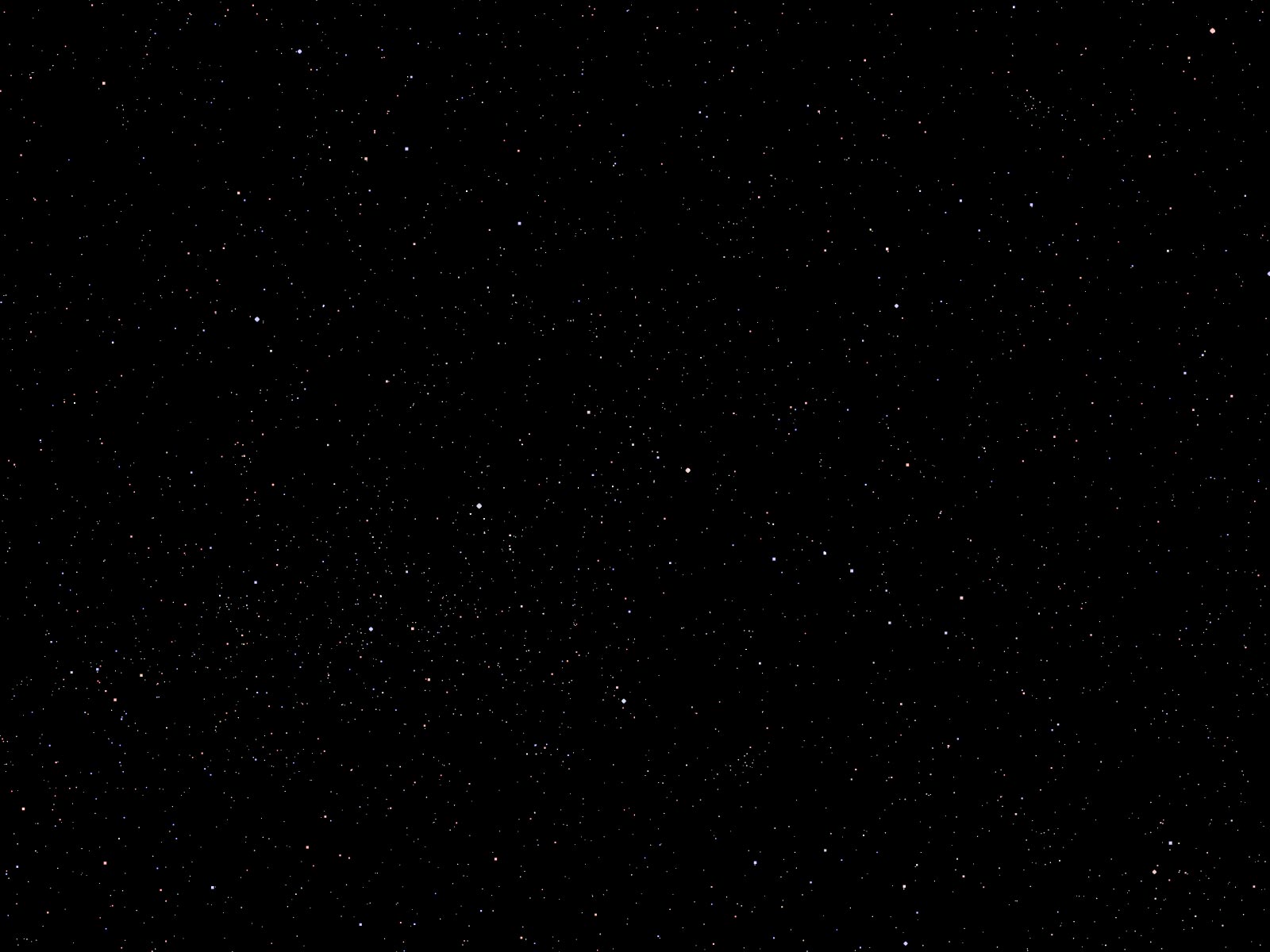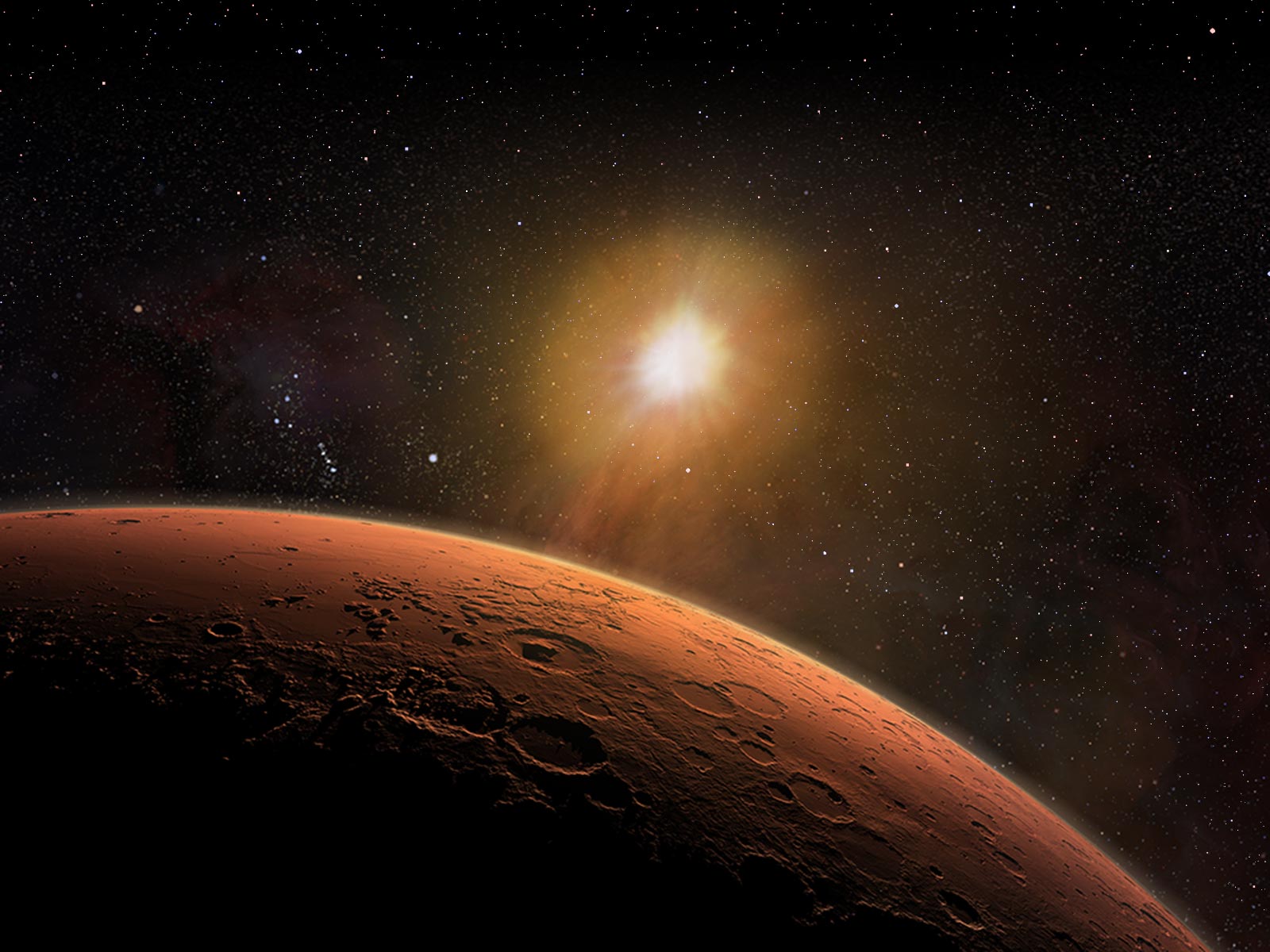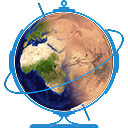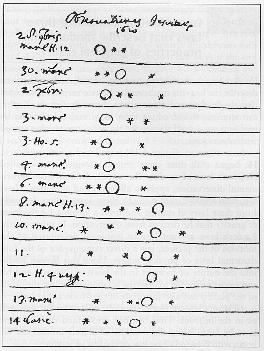


 U.Mars — Encyclopedia
U.Mars — Encyclopedia
The Solar System
The Italian astronomer, Galileo Galilei (1564 – 1642), used the newly invented telescope to transform our understanding of the universe. Through his telescope he was the first to see mountains on the Moon and sunspots on the Sun. He saw Saturn's rings, though could not see clearly enough to understand their nature. He also saw that Venus has phases, which can only happen if Venus orbits the Sun and does not orbit the Earth (as was thought at the time).
Another famous discovery that Galileo made with the telescope was of the moons of Jupiter. The four moons were dots of light near the circular disk of the planet. Over the course of a night, the dots changed position and Galileo recognized a pattern indicated that this behavior repeated.
Here is a copy of a sketch that Galileo made of the changing positions of the moons of Jupiter.

Galileo's discoveries were extremely controversial because they indicated that the Earth was not at the center of the Universe: moons orbited Jupiter, and Venus orbited the Sun; thus, it seemed more logical that Earth also orbited the Sun. This was in conflict with the teachings of the Catholic Church. Galileo was arrested and forced to state that his previous assertions were not correct. In 1992 the Church formally admitted that their condemnation of Galileo was in error. Still, Galileo's discoveries were extremely important because they lay the foundation for Newton's laws of gravity and Kepler's laws of planetary motion.